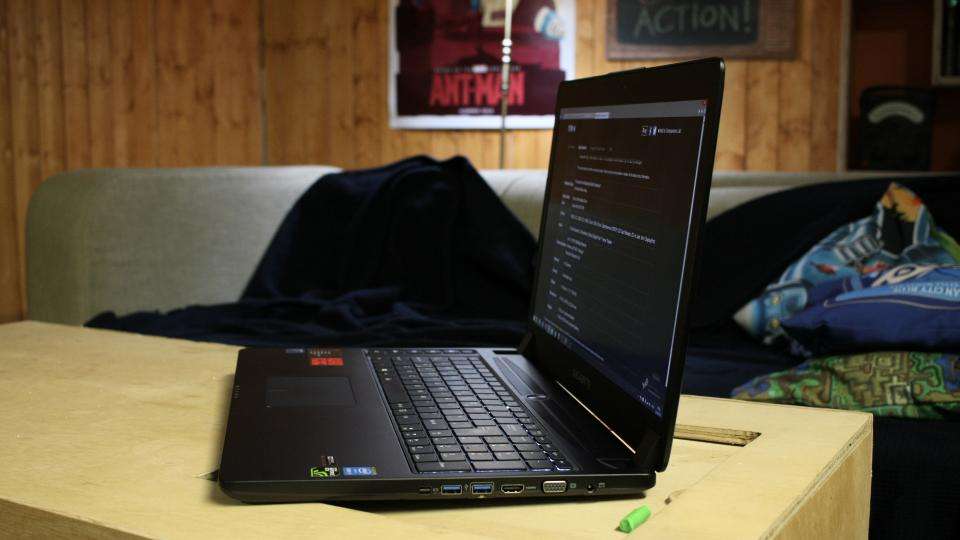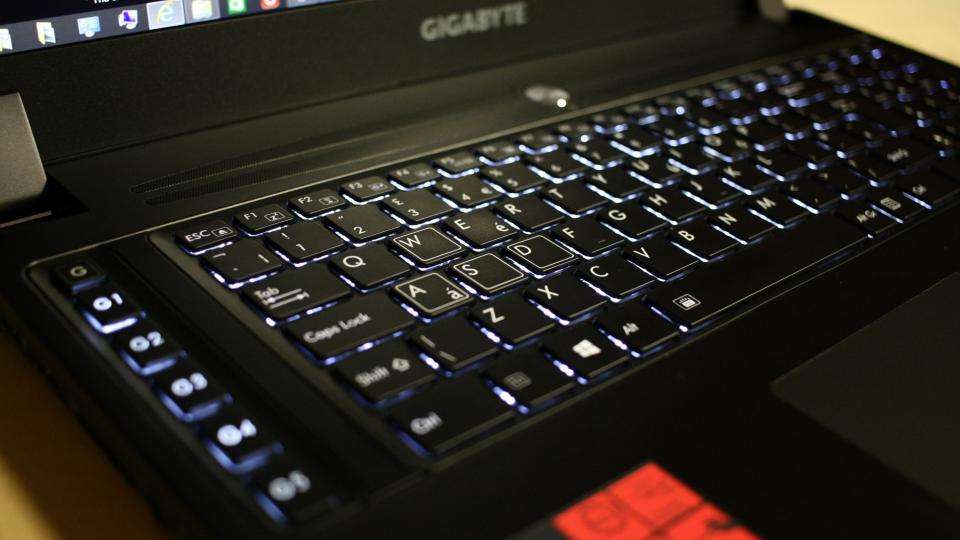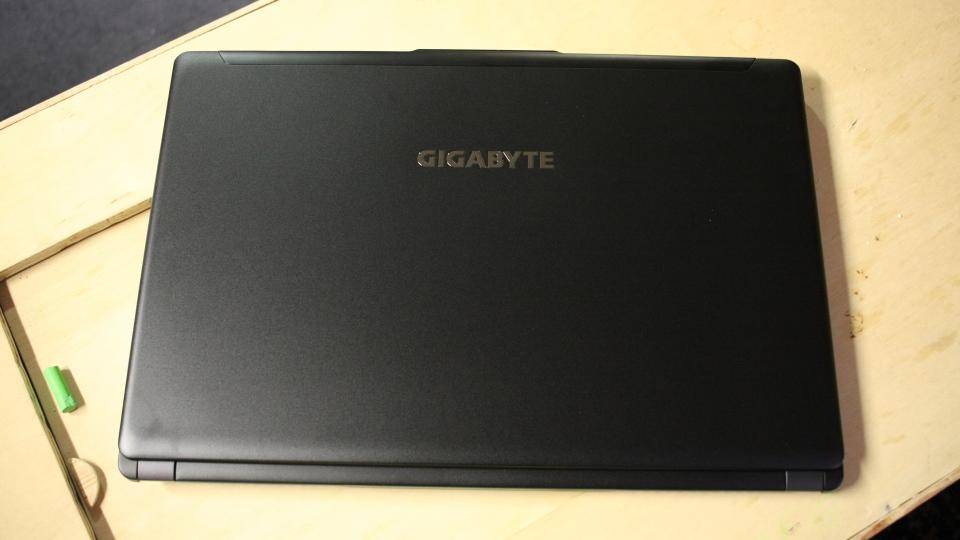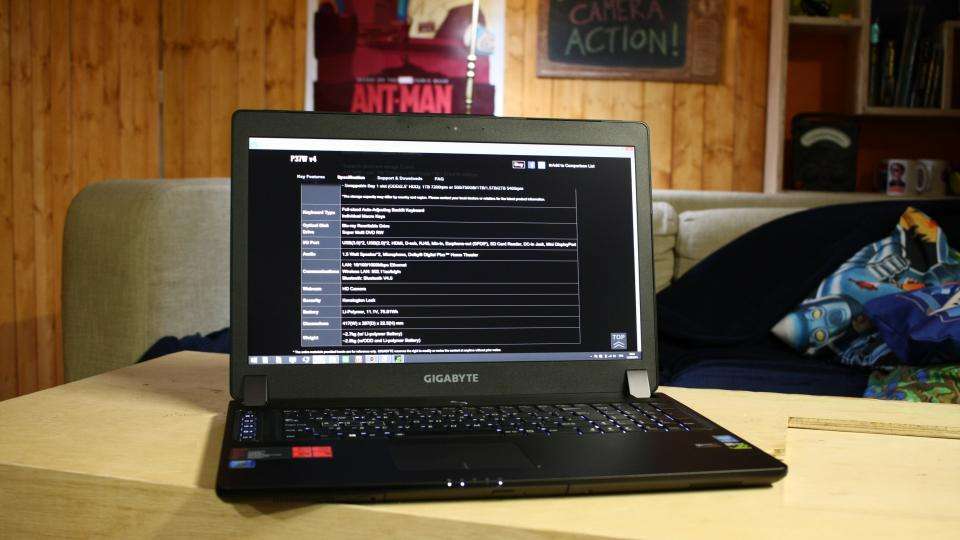The Gigabyte P37W v4 is surprisingly thin as far as 17.3in gaming laptops go. That might be the equivalent of saying it’s the lightest whale in the pod, but Gigabyte does have a knack for creating svelte gaming laptops.
At 22.5mm thick the P37W continues this heritage, and even though the 2.7kg weight is never going to make it the laptop of choice for the road warrior, it’s still significantly lighter than other similarly-sized gaming systems such as the Asus ROG G751JT – that’s far closer to a hefty 5kg.

As you would expect for a gaming laptop, Gigabyte has packed in plenty of gamer-friendly features, including five programmable macro keys down the left side of the keyboard. The keyboard is also backlit and the WASD keys have easily identifiable markings.
While the keys themselves were comfortable to type on in terms of travel and feedback, they do feel surprisingly cramped. There’s no space between the alphanumeric keys and the full-size numberpad, and the cursor keys are equally crammed in. Considering the P37W is a 17.3in laptop, there really shouldn’t be a need to pack the keys in so tightly.
The touchpad was also a little disappointing. It could have been bigger considering how much space is left below the keyboard. It does mean there’s a generously-sized palm rest, but more space for swipes and gestures would have been welcome instead.

The touchpad itself was also a little lacking in sensitivity. The bottom corners are dedicated to left and right mouse button so click in, but they aren’t separated from the rest of the touchpad, and aren’t touch sensitive themselves. This means your fingers will naturally glide over from the main touchpad area and abruptly stop registering as they inadvertently continue over the mouse buttons, which can be incredibly frustrating.
The rest of the chassis is pleasant enough, albeit made from plastic. This means there’s a slight degree of flex to the keyboard. The lid is plain, with only Gigabyte branding to break up the gunmetal finish. The speakers located on the front lip of the laptop put out a reasonably loud sound and quality is respectable too, avoiding sounding overly tinny.

With two USB3 ports on the right and two slower USB ports on the left, there’s plenty of room for connecting peripherals. HDMI, VGA and Mini DisplayPort video outputs mean you’re not left wanting if you want to connect external displays. There’s also Gigabit Ethernet and 802.11ac Wi-Fi for getting online.












